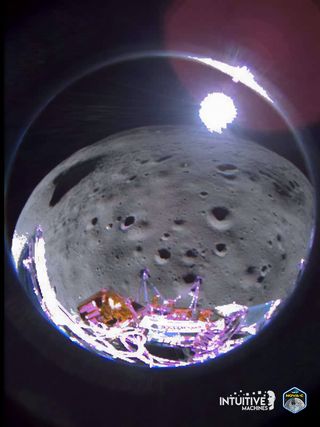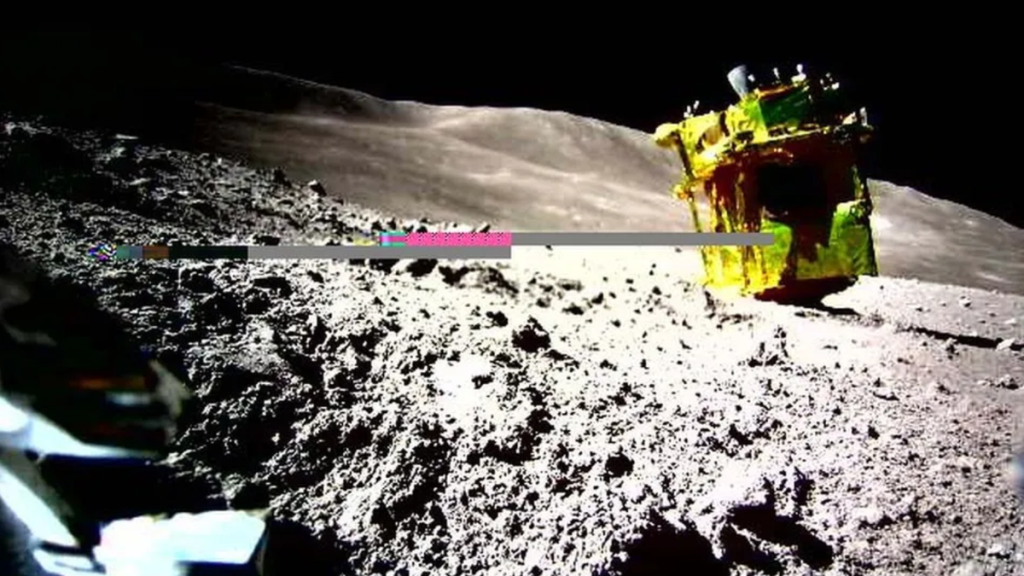Lunar landing attempts are becoming so frequent that companies are watching and learning from each other.
A panel discussion at the International Astronautical Congress in Milan, Italy, on Oct. 17 gave insights into four teams that attempted moon landings over the past year, with participants from Astrobotic, Intuitive Machines, the Japan Aerospace Exploration Agency (JAXA) and the Indian Space Research Organization (ISRO).
The wide-ranging discussion saw the panelists highlight the importance of interoperability, sustainable exploration strategies and the need for infrastructure like landing pads and micro-power grids, give their thoughts on what lunar exploration will look like in 2040, and open up about challenges they faced getting to the moon and how they learned from previous and recent missions.
Tim Crain, chief growth officer and co-founder of Houston-based Intuitive Machines, saw his company land on the moon in February with its Nova-C lander “Odysseus.” Crain noted that NASA set up an enormously helpful exchange program called Lunar Catalyst, providing legacy understanding and data, as well as access to those still working at the agency from the Surveyor mission days. But there were also much more recent opportunities to learn.
Related: Missions to the moon: Past, present and future
Crain stated that Intuitive Machines had conversations with an engineer from Israel’s private Beresheet lander mission, which crashed into the moon in 2019.
“There are at least four improvements we made on Nova in its design and development as we watched other people complete their missions, and we went, ‘Oh, wow, that got them.’ Let’s change that and modify that right there and then,” Crain said.
“The community’s generally been pretty open about the key lessons learned from each mission, and we’ve all benefited from those key lessons,” Crain said.
Japan also landed on the moon early this year, with its SLIM spacecraft demonstrating a precision landing thanks to smart algorithms making the most of limited resources, said Masaki Fujimoto of JAXA. Even so, there was room for improvement.
Something went wrong in the last 40 seconds of flight, leading SLIM to lose the nozzle of one of its two landing engines. The result was a “very acrobatic orientation on the surface of the moon,” said Fujimoto. “This final 40 seconds is like giving us even more motivation for the next mission,” he added.

Dan Hendrickson, vice president of business development at Pittsburgh-based Astrobotic, stated that the biggest challenge his team faced was a mission-ending issue. Astrobotic launched its Peregrine moon lander in January, but it suffered an issue shortly after, and eventually crashed into the Pacific Ocean.
“We unfortunately had a valve failure that proved to be the most challenging technical issue that we had the entire mission, for obvious reasons, in that we had a rush of helium coming from the pressure tank that entered the oxidizer tank and caused a rupture,” Hendrickson said.
But lessons have already been learned. Hendrickson said Astrobotic will improve future missions by adding a pressure regulator and making mechanical design changes to the valve.
“We’ve got an opportunity to, again, understand where the weak points are, iterate and then fly again ultimately,” Hendrickson said.
Veeramuthuvel Palanivel, project director for ISRO’s Chandrayaan-3 moon lander, said the biggest challenge for the successful landing mission was developing new technologies and new systems, including a set of sensors to determine position in the absence of GPS signals for the moon.
Palanivel stated the spacecraft needed radio and laser altimeters, velocity measurements in all directions, a laser doppler velocimeter, and a camera-based hazard detection and avoidance sensor, as well as throttling control over its propulsion systems.
As well as lessons learned and major challenges, the participants are optimistic about the future. Moderator A. C. Charania, NASA’s chief technologist, asked the panelists to envision 2040.
Fujimoto envisions small rovers exploring the moon in a creative way, similar to how people walk their dogs on Earth, following no prefixed route. Crane envisions regular launches to the moon with return vehicles bringing samples and materials, and habitats built from lunar material, while Palanivel noted the national target of putting an Indian astronaut on the moon by 2040. Hendrickson believes a company will be extracting a resource and closing the business case for the activity by this time.
Asked what he would spend a hypothetical injection of $20 million into a lunar lander program on, Hendrickson responded: “I’m gonna spend $20 million on valves.”

